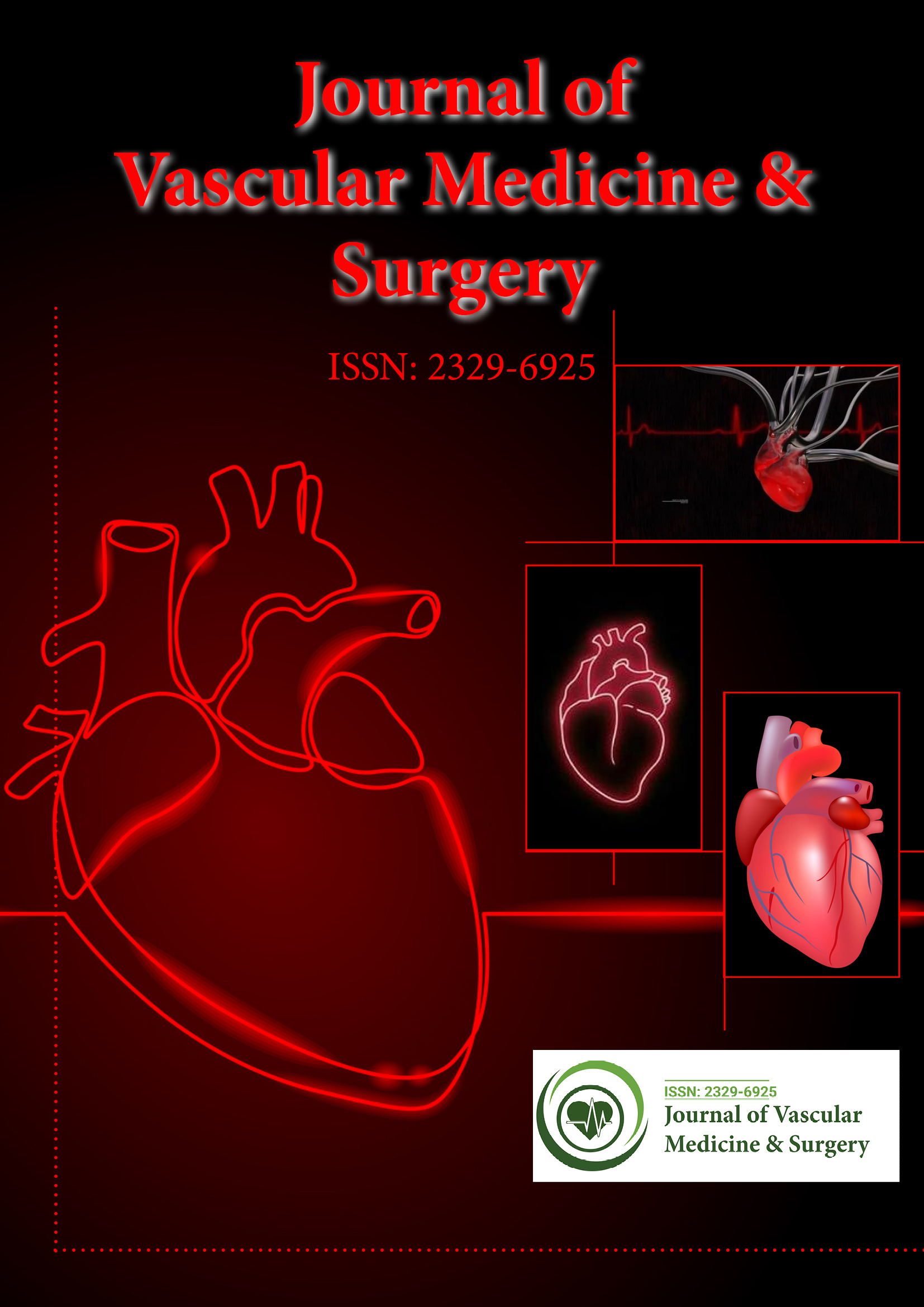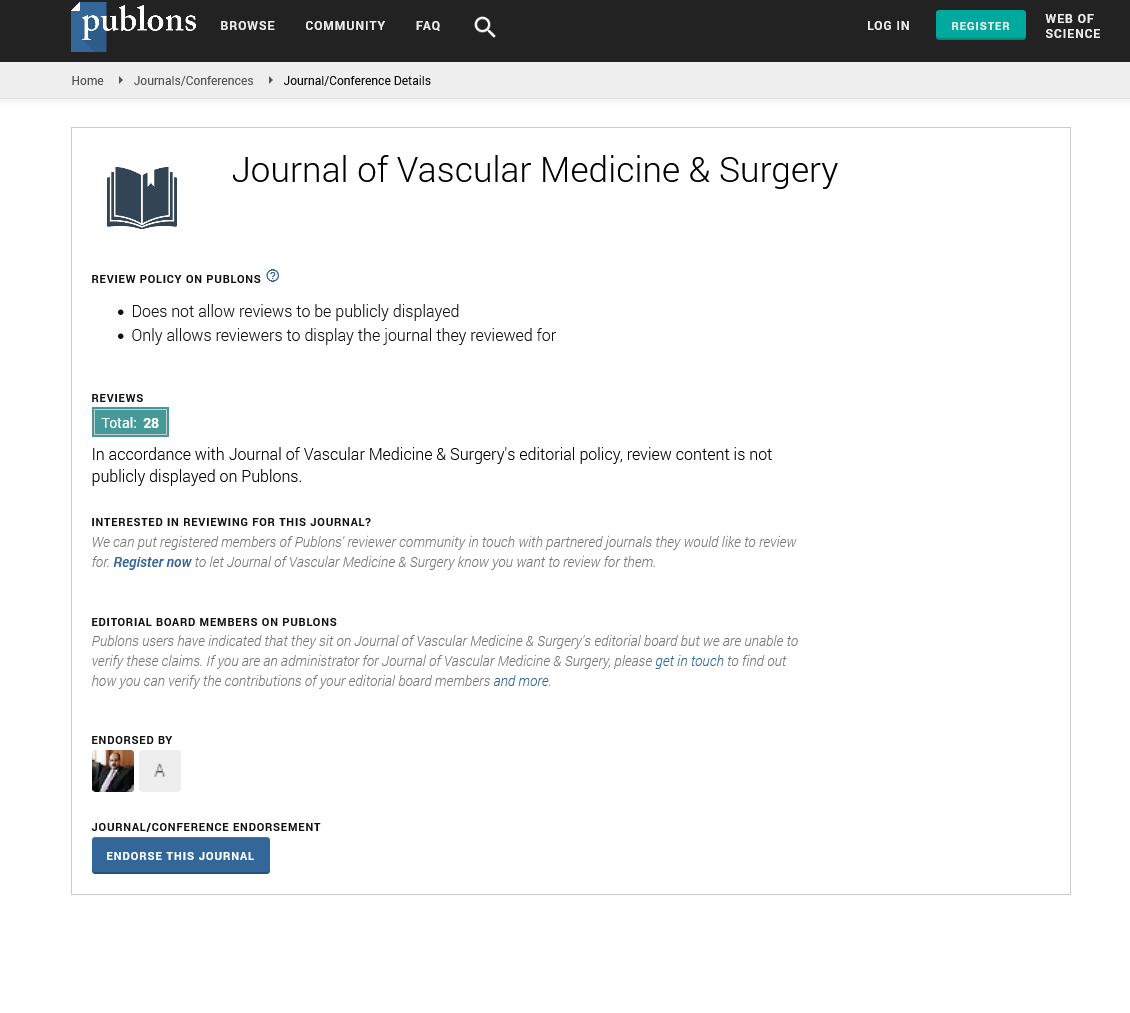Indexed In
- Open J Gate
- Academic Keys
- RefSeek
- Hamdard University
- EBSCO A-Z
- OCLC- WorldCat
- Publons
- Euro Pub
- Google Scholar
- SHERPA ROMEO
Useful Links
Share This Page
Journal Flyer

Open Access Journals
- Agri and Aquaculture
- Biochemistry
- Bioinformatics & Systems Biology
- Business & Management
- Chemistry
- Clinical Sciences
- Engineering
- Food & Nutrition
- General Science
- Genetics & Molecular Biology
- Immunology & Microbiology
- Medical Sciences
- Neuroscience & Psychology
- Nursing & Health Care
- Pharmaceutical Sciences
Commentary Article - (2022) Volume 0, Issue 0
Effects of Acute Aortic Syndrome and its Risk Factors
Morello Castelli*Received: 03-Nov-2022, Manuscript No. JVMS-22-19324; Editor assigned: 07-Nov-2022, Pre QC No. JVMS-22-19324 (PQ); Reviewed: 21-Nov-2022, QC No. JVMS-22-19324; Revised: 28-Nov-2022, Manuscript No. JVMS-22-19324 (R); Published: 08-Dec-2022, DOI: 10.35248/2329-6925.22.S12.490
Description
Acute Aortic Syndrome (AAS) refers to a group of require surgery, painful, and potentially fatal aortic abnormalities. Aortic dissection, intramural thrombus, and penetrating atherosclerotic aortic wound are examples of acute aortic syndrome. It can be caused by an aortic wall disease involving the tunica media, most commonly in the venous system. Acute aortic syndrome has the risk of causing acute coronary syndrome. It is an existence condition with a high risk of death if it appears unexpectedly. It’s premature death rate is reduced only when it is identified early and treated by a surgeon with extensive experience.
If patients sustain the acute presentation, 30% will result in complications and require careful monitoring within three to five years. Early detection is essential for survival, and management is difficult; however, increased awareness of the syndrome and improved management techniques are enhancing outcomes for patients. Aortic syndrome refers to disorders that affect the thoracic and abdominal aortas. The aorta is a large artery that leads away from the coronary artery. The thoracic and abdominal aortas are the sections of the aorta that run through the chest and abdomen, respectively.
Acute aortic syndromes usually necessitate immediate medical attention, and many people require surgery. Acute aortic syndrome can be fatal if chronic. The most common cause of acute aortic syndrome is uncontrolled high blood pressure. Aortic dissection occurs when there is an injury in the aortic wall. It is the most significant form of acute aortic syndrome. Intramural blood clot develops when blood vessels in the aorta rupture and blood accumulates in the aortic wall. A penetrating atherosclerotic ulcer is an aortic wall pathological condition.
Symptoms of acute aortic syndrome
Painful, sudden chest pain is the most common symptom of acute aortic syndrome. Pain in the abdomen, back pain, hyperventilating, and decrease heart rate in the legs or feet.
Causes acute aortic syndrome
Uncontrolled blood pressure is the most common cause of acute aortic syndrome (hypertension). Some potential causes include: Aneurysm of the aorta. Defects in the aortic valve. Plaque accumulation and artery reducing (atherosclerosis).
Risk factors of acute aortic syndrome
Age: People over the age of 60 are highly possible to develop acute aortic syndrome.
Drug use: Drug consumers are highly possible to develop acute aortic syndrome.
High-intensity strength training: Heavy weightlifting and other forms of resistance exercise may increase the chances of developing acute aortic syndrome.
Pregnancy: People who have no other risk factors or health issues can develop acute aortic syndrome while pregnant.
Sex: People assigned male at birth are highly possible to develop acute aortic syndrome because women and people assigned female at birth.
Acute aortic syndrome diagnosed
The test methods are used by healthcare providers to diagnose acute aortic syndrome. A CT scan is the standard for analyzing the structure, function, and blood flow of the aorta. A chest Xray is used to examine the structure of the heart and its surrounding organs. Coronary angiogram to evaluate the blood vessels in the heart and blood flows through the heart. An electrocardiogram is used to evaluate the electrical signals of the heart. Transthoracic echocardiogram to examine the chambers, valves, and blood vessels of the heart.
Complications of acute aortic syndrome
Aortic aneurysm formation, aortic dissection, ischemia of the end organs, ischemia of the limbs, the aortic valve, and Haemoperidardium. Pleural inflammation, dissection of the coronary arteries, death and Stroke and infarction of the heart.
Citation: Castelli M (2022) Effects of Acute Aortic Syndrome and its Risk Factors. J Vasc Surg. S12:490.
Copyright: © 2022 Castelli M. This is an open access article distributed under the terms of the Creative Commons Attribution License, which permits unrestricted use, distribution, and reproduction in any medium, provided the original author and source are credited.

